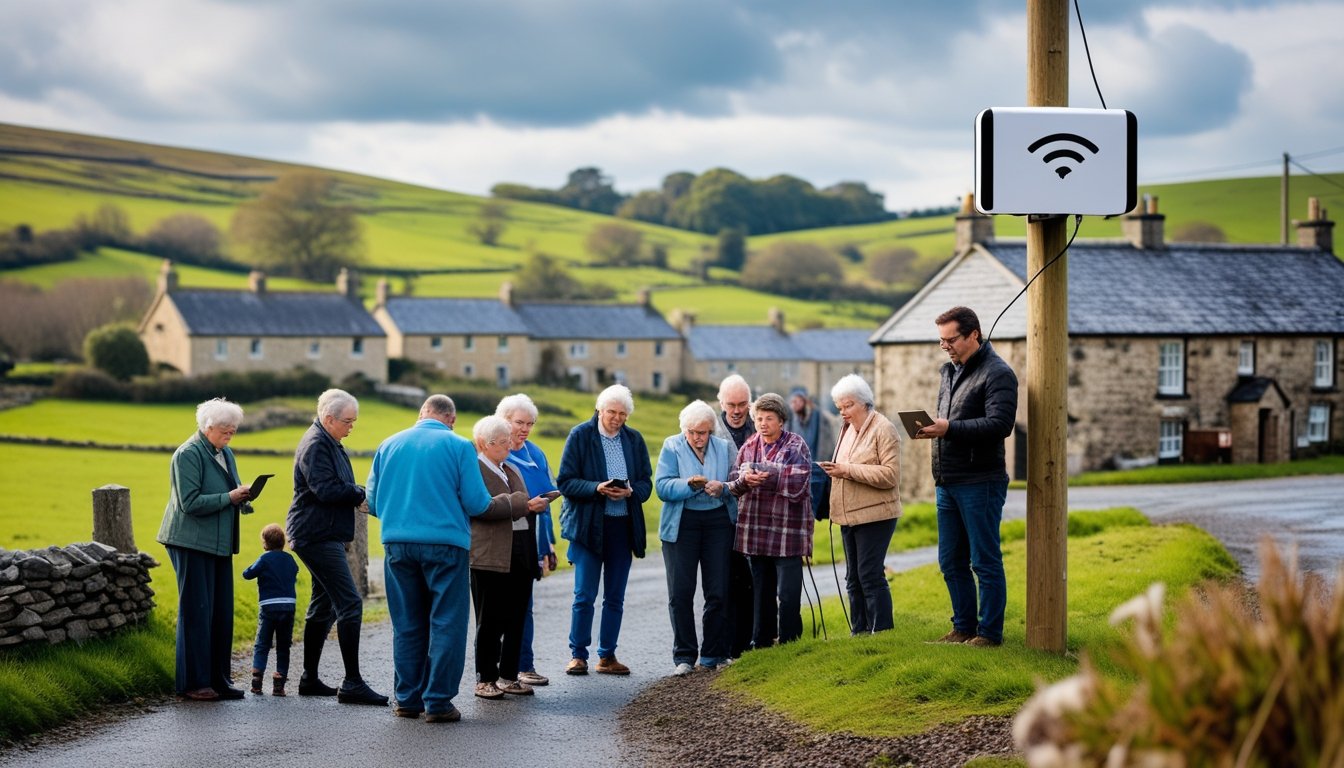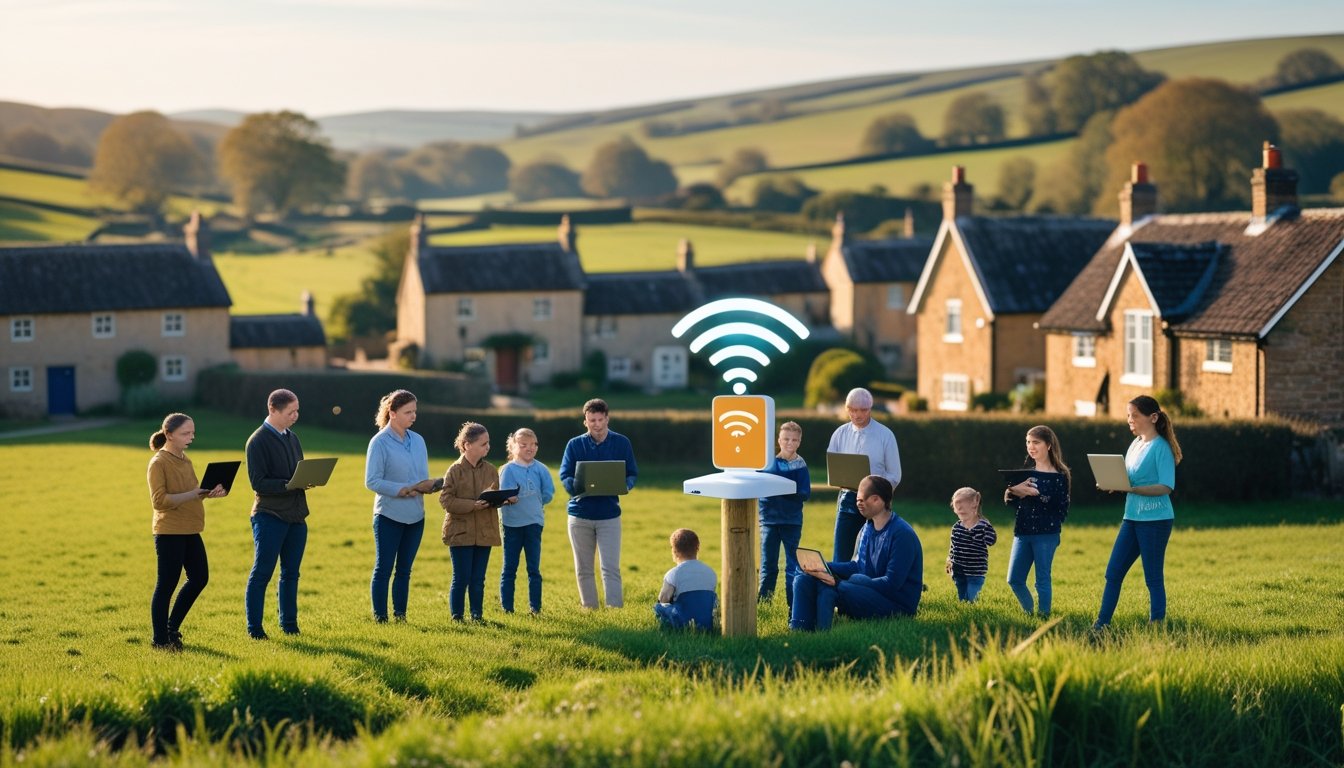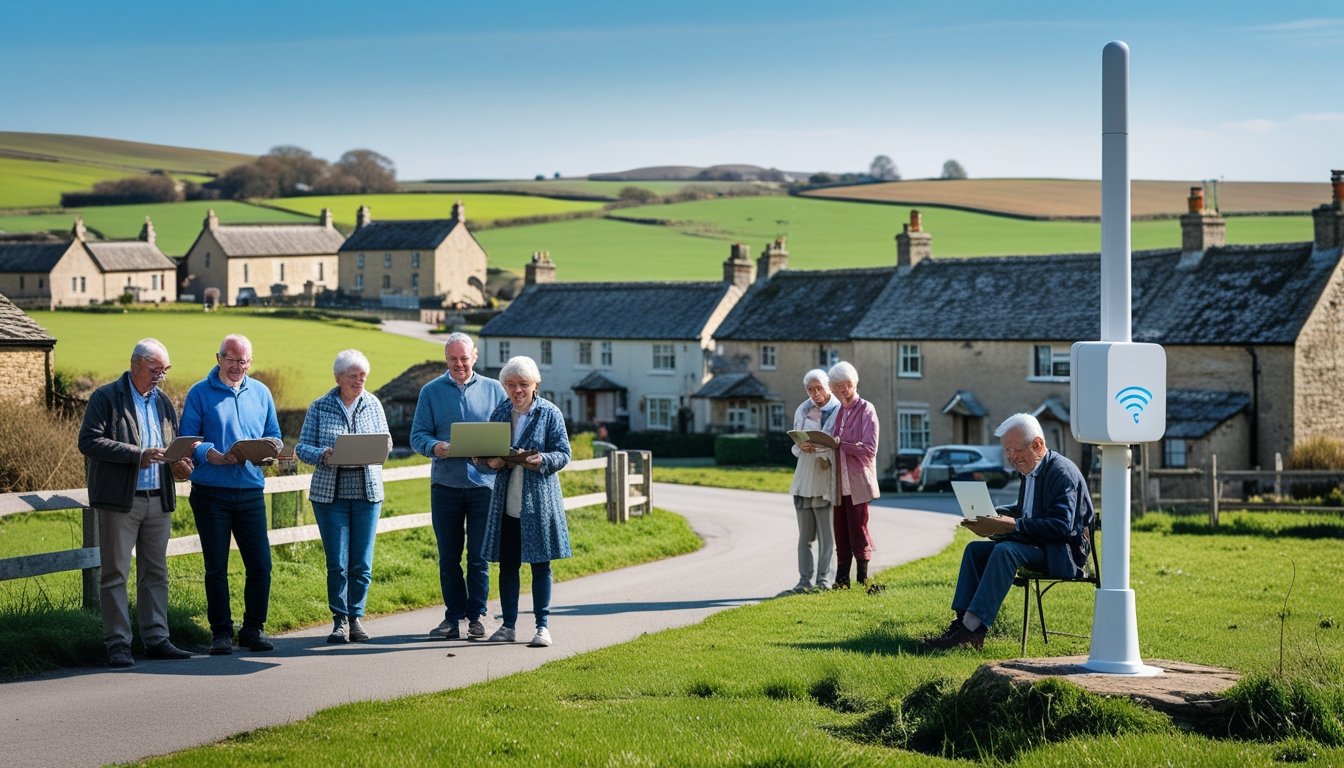Late updated: 07 Sep 2025 09:09
Written by: Oliver Bennett
Innovative Community Wi-Fi Solutions In Rural UK: Bridging The Connectivity Gap
Rural communities in the UK often face significant challenges when it comes to accessing reliable internet connectivity. Innovative community Wi-Fi solutions are transforming the broadband landscape in these areas, enhancing connectivity and fostering local collaboration. These solutions not only provide fast internet access but also empower communities to work together towards improved technological infrastructure, bridging the digital divide that has historically left rural areas lagging behind.

The advent of wireless broadband initiatives has paved the way for more resilient and adaptable internet services. By leveraging cutting-edge technology, local communities are acknowledging the pressing need for enhanced connectivity and taking proactive steps to enhance their own digital resources. From leveraging 4G networks to exploring innovative fixed-wireless setups, these solutions are specifically tailored to meet the unique challenges posed by rural geography and limited traditional infrastructure.
Whether it’s through government-backed initiatives, like Project Gigabit, or independent community efforts, the drive to improve rural internet access has gained remarkable momentum. As we explore these transformations, it becomes clear how vital these solutions are, not just for staying connected in a digital-first world, but for enabling rural communities to thrive and innovate.
Key Takeaways
- Community-driven Wi-Fi solutions address rural connectivity challenges.
- Cutting-edge technologies enhance rural broadband through innovation.
- Government and local initiatives boost access to reliable internet.
Key Challenges and Opportunities for Community Wi-Fi in Rural UK

Community Wi-Fi in rural UK faces several challenges including digital divide issues, infrastructure constraints, and the need for support from local authorities. Opportunities also abound in leveraging community-led initiatives to improve connectivity.
Digital Divide and Rural Connectivity Barriers
The digital divide remains a considerable challenge for rural communities in the UK. Many residents lack access to reliable internet services, hindering their ability to participate fully in today's digital world. This divide presents barriers to economic growth, education, and healthcare access.
Rural areas often experience slower internet speeds and fewer service options. Limited provider competition can result in higher prices and inadequate service quality. Addressing these barriers requires targeted campaigns and investments to bring broadband to underserved communities.
It's essential to understand local demographics and specific needs. Tailored solutions that appreciate the unique characteristics of each rural community can bridge the gap effectively. Supporting training programmes to enhance digital literacy can also empower residents to exploit the benefits of improved connectivity.
Coverage Gaps and Infrastructure Limitations
Infrastructure limitations pose significant hurdles in extending Wi-Fi coverage to rural areas. Sparse population density and challenging terrain increase deployment costs for service providers. Such conditions often lead to negligible or non-existent broadband infrastructure.
To overcome these problems, innovative solutions like satellite technology and wireless broadband are making headway. Public-private partnerships can offset high costs associated with infrastructure development. However, progress can still be slow, with many areas still without adequate coverage.
Encouraging investment in infrastructure and adopting scalable solutions are vital steps towards mitigating coverage gaps. The implementation of cost-effective technologies like fibre and mobile network upgrades is crucial. Improving connectivity not only impacts residents' quality of life but also supports the local economy.
Role of Local Authorities and Community-Led Initiatives
Local authorities play a critical role in facilitating improved connectivity in rural areas. By partnering with communities and private entities, these authorities can help drive broadband deployment projects that are both efficient and cost-effective.
Community-led initiatives have shown promise in bypassing traditional barriers. Local groups often rely on volunteers to extend existing networks or establish new ones. Involving local residents ensures services meet specific needs and encourages community ownership.
Collaboration between authorities and communities fosters a robust ecosystem for innovation. By providing funding and technical support, local councils can boost these projects significantly. Together, we can achieve faster broadband access and close the digital gap for those in rural locales.
Innovative Community Wi-Fi Solutions Transforming Rural Broadband
In rural areas, the deployment of community Wi-Fi is transforming digital connectivity. Solutions such as full fibre networks, satellite internet, and key government initiatives are all playing pivotal roles.
Full Fibre and Gigabit-Capable Broadband Networks
Full fibre networks are essential for delivering high-speed internet suitable for today's digital demands. In rural UK, gigabit-capable broadband is facilitated by initiatives like Project Gigabit, aiming to expand full fibre broadband access.
These networks offer robust connectivity, crucial for remote work, education, and healthcare. Employing fibre optics directly to premises ensures faster, more reliable connections compared to older copper-based systems. Such advancements not only support individual households but also empower community Wi-Fi projects, benefiting entire localities.
Satellite Internet and Wireless Technologies
Satellite internet is another key player in enhancing rural broadband. It bridges connectivity gaps where full fibre networks can't reach. Innovations in satellite technology allow for significant broadband expansion, providing internet access even in the most remote areas.
Wireless technologies, including the development of the Shared Rural Network, contribute to extending digital connectivity. By integrating these technologies with local Wi-Fi initiatives, rural communities are gaining access to consistent and high-speed internet, fostering improved education and business opportunities.
Government Initiatives and Funding Programmes
Government initiatives are crucial for the rollout and sustainability of rural broadband solutions. The Broadband Universal Service Obligation (USO) ensures that every household can request a minimum standard of service. Additionally, funding programmes, such as the Gigabit Broadband Voucher, support households and small businesses in acquiring gigabit-capable broadband.
These programmes aim to close the digital divide and support rural innovations, providing the necessary infrastructure for digital connectivity. By leveraging such resources, community Wi-Fi projects can thrive, ensuring rural areas develop on par with urban counterparts.
Frequently Asked Questions

In the rural UK, implementing community Wi-Fi solutions involves several strategic considerations. We explore key best practices, funding strategies, technological innovations, and regulatory impacts. Through the involvement of local authorities, these initiatives aim to bridge the digital divide.
What are the best practices for implementing Community Wi-Fi networks in rural areas?
Identifying specific local needs and involving community members in planning are crucial steps. Collaborating with technology providers can ensure the deployment of suitable infrastructure. Moreover, integrating sustainable management practices will help maintain the network's efficiency over time.
How can remote UK villages sustainably fund Community Wi-Fi initiatives?
Funding can be sourced from a mix of government grants, community fundraising, and partnerships with private enterprises. These initiatives can become more sustainable by setting up subscription models or local support schemes. Multi-stakeholder funding can spread costs and provide financial stability.
What technologies are being used to enhance internet connectivity in rural communities?
A range of technologies addresses connectivity issues in rural areas. Fibre-optic infrastructure, 4G and 5G mobile networks, and satellite services like Starlink are prominent. Each offers unique solutions to overcome geographical and infrastructural challenges, depending on the area's specific conditions.
How do regulations affect the deployment of Community Wi-Fi solutions in the UK countryside?
Regulatory frameworks play a role in shaping Wi-Fi deployment by setting standards and ensuring fair competition. Obtaining the necessary permits and adhering to the guidance laid out by telecommunications authorities help in smooth implementation. Staying informed about regulatory changes is vital for compliance.
What role do local authorities play in the development of rural Community Wi-Fi networks?
Local authorities often facilitate partnerships between communities and internet service providers. By offering logistical support and resources, they can greatly influence the project's success. Their involvement can expedite the deployment process and ensure that the network meets the needs of the local population.
How is the digital divide being addressed through innovative Community Wi-Fi projects in rural UK?
Community Wi-Fi projects seek to reduce digital inequalities by offering reliable internet access to underserved areas. By leveraging local resources and fostering collaboration, these initiatives can provide educational and economic opportunities. Such projects play a crucial role in promoting social inclusion and growth.
